MEDIA RELEASE
10 Surrey LRT features for a fraction of the cost
FOR IMMEDIATE RELEASE – June 14, 2017 – Surrey, BC
TransLink recently posted a video on the proposed Surrey Light Rail Transit system, which outlines design features that are expected to be a part of the LRT project. Many of these design features and benefits are not LRT-exclusive – meaning they can be incorporated into our existing transit system at a fraction of the cost.
Here are 10 LRT features and benefits that we can have without an expensive, multi-billion-dollar LRT.
Contents
1. Dedicated Transit Lanes
The current Surrey-Newton-Guildford LRT proposal will place LRT tracks in a dedicated, transit-only right-of-way which will not be accessible to other vehicles.
Dedicated bus lanes can achieve the same objective, giving rapid buses a dedicated rights-of-way. They are easy to set up, and inexpensive to construct. 4 locations on the 96 B-Line corridor already make use of them. The dedicated bus lanes at King George/88th Ave. and King George/76th Ave. were installed in 2014 for approximately $4 million. Compare that to the billions of dollars needed for Surrey’s full LRT project.
Dedicated bus lanes can be added gradually, with investments targeting needed areas at first, whereas LRT requires all of the investment to happen at once with massive inconveniences during construction.
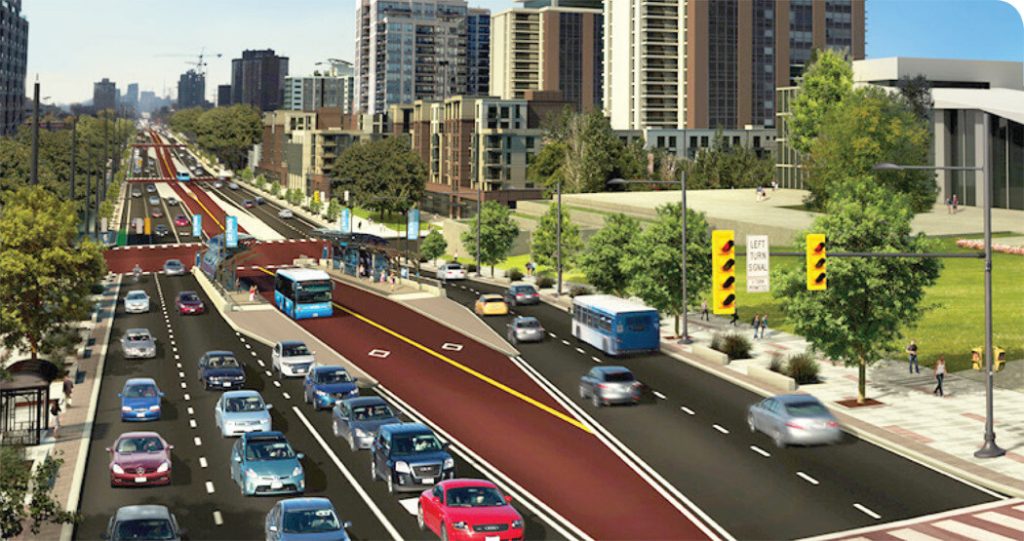 Planners have long envisioned a full median transit-way on King George Blvd., first proposed in the early 2000s. This median transitway would allow buses to avail of dedicated transit lanes on the entire corridor, similar to those which will be used by the proposed LRT system.
Planners have long envisioned a full median transit-way on King George Blvd., first proposed in the early 2000s. This median transitway would allow buses to avail of dedicated transit lanes on the entire corridor, similar to those which will be used by the proposed LRT system.This is a proven concept in Canada. A median transit-way on King George Blvd would look similar to the VIVA Rapid Transit bus-ways that were built in York Region, Ontario (pictured above).
2. Traffic Signal Priority

Surrey and TransLink have often advertised that an LRT system will include traffic signal priority, to make sure trams move through intersections on a green light. You can have this for buses too!
In fact, the technology for this has been around for a long time. The original 98 B-Line connecting Downtown Vancouver and Richmond made use of such a system more than 15 years ago, with more than 59 signalized intersections equipped with technology that would extend green lights for approaching B-Line buses.
(Read more: Intelligent Transportation Systems in the 98 B-Line)
3. Real-time “Next bus” displays
TransLink’s survey advertised that an LRT line will include “digital ‘Next LRT’ display boards” at stations. This feature is not exclusive to LRT systems.
Digital boards that can display real-time arrival information for buses have been in use in our region for over 15 years. The first displays were used for the original 98 B-Line connecting Downtown Vancouver and Richmond. In addition, real-time GPS bus tracking has been available system-wide since 2012.
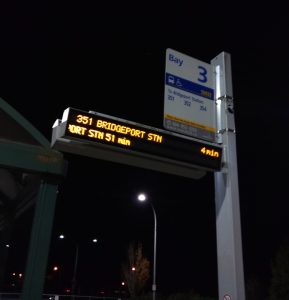
One location in the Lower Mainland where there are real-time “next bus” displays for waiting passengers is actually in Surrey!
If you have ever been to the South Surrey Park & Ride and transit exchange, you may have noticed that each waiting bay is equipped with an LCD display that shows you the next bus arrival time in minutes.
Similar displays utilized by the #3 bus route are installed at many stops on Vancouver’s Main Street.
4. Off-board fare payment
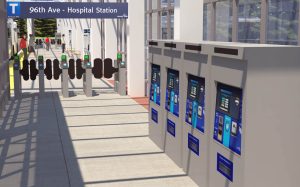
TransLink has advertised that the LRT stations will have Compass Card validators and ticket machines, which will allow riders to pay their fares before boarding, relieve the driver of fare collection duties and streamline the boarding process for transit passengers.
Again, this feature is not exclusive to LRT. Ticket machines and validators could be set up at our B-Line stops and stations to speed boarding.
5. All-door boarding
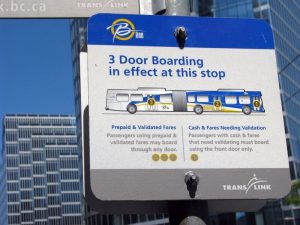
With fares being collected at the station rather than by the driver, LRT vehicles will allow you to board and disembark from any door.
TransLink has implemented 3-door boarding on buses for many years on the 99 B-Line, and on other routes such as #145 to SFU.
Existing rapid bus routes such as the 96 B-Line could also have all-door boarding. This would reduce stop dwell times, allow rapid buses to perform similarly to an LRT, and give riders a similar experience to using an LRT.
6. Large, sheltered stations
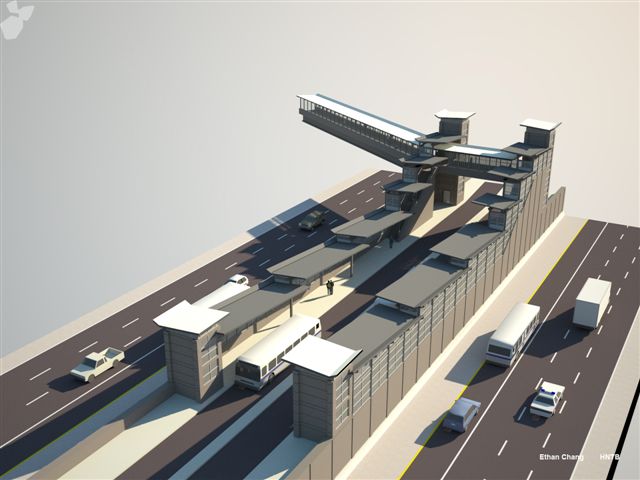
According to TransLink, LRT stations on the Surrey-Newton-Guildford line will offer a covered canopy for wind and rain protection, seating security cameras, and emergency phones.
Of course, these are all features that could be added to bus stops and stations as well.
Rapid bus stations can be built to look as nice and offer as many features as any LRT station. A great example would be the transitway stations on the I-5 median in Seattle, which resemble full LRT stations (pictured right: Mountlake Terrace Station).
7. Zero emissions
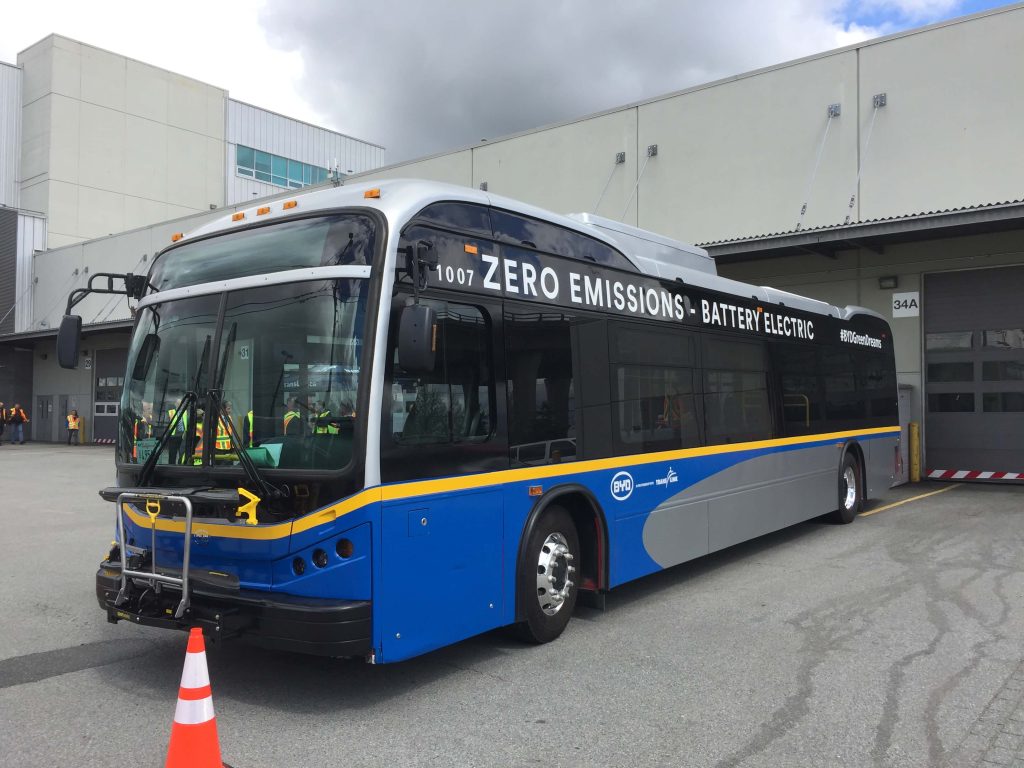
LRT fans frequently point out that the electric overhead wiring system used on most LRT systems allows vehicles to produce no emissions, reducing greenhouse gases.
Electric overhead wiring systems can also be used for buses, and we demonstrate that right here. Vancouver has the largest electric “trolley bus” system in North America.
Recently, TransLink has also begun several test programs for new battery-electric buses (pictured right). This emerging and proven technology will eventually bring the emissions-free benefits of electric propulsion to entire transit fleets.
8. High carrying capacity
The City of Surrey has often highlighted the higher capacities of a street-level LRT system, insisting that rapid buses would experience overcrowding like the 99 B-Line on Broadway.
However, a full Bus Rapid Transit (BRT) system can offer higher capacity than traditional B-Line services.
For example, BRT stations can be designed to have passing lanes, which allow buses on express or super-express routes to pass buses making local stops. Passing lanes can boost the capacity of transitway systems to match or even exceed LRT systems. In Canada, Ottawa’s Transitway has passing lanes at BRT stations.
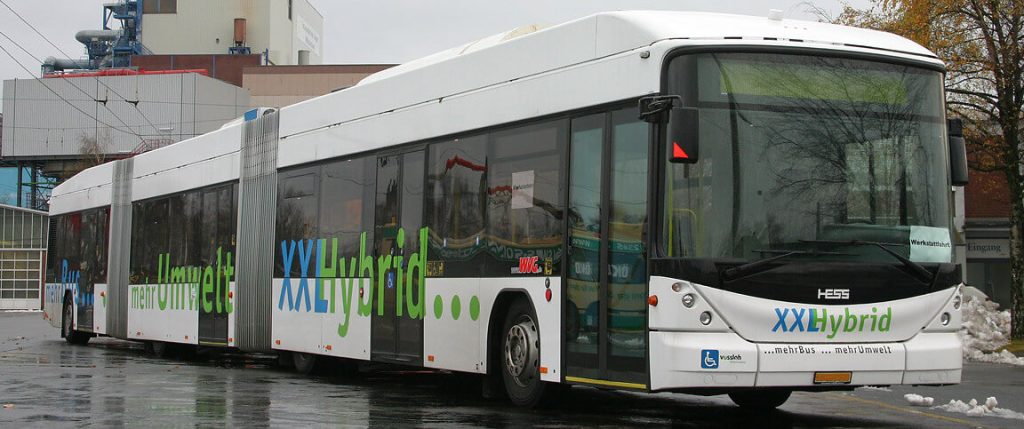
9. Fixed alignments
Light Rail fans have often lauded LRT for its fixed alignments due to tracks, which are seen as safer when transit routes are routed through pedestrian areas. At least one TransLink concept for the Surrey-Newton-Guildford LRT shows the line running through a pedestrian plaza in Newton.
However, systems that guide buses on fixed rights-of-way are already available, and can be combined with special paint & paving that visually represents the right of way and can mimic LRT tracks.
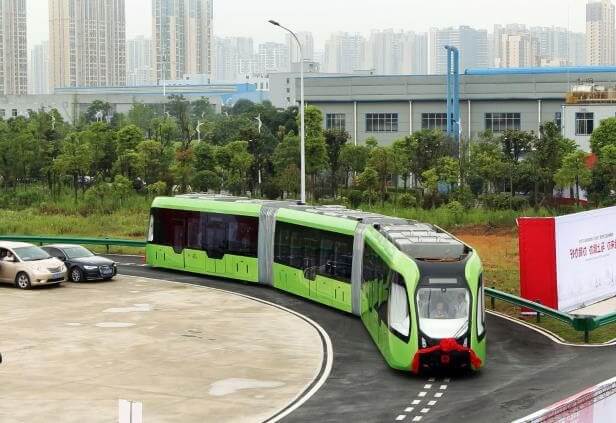
In China, a recently launched technology which allows tram-like buses to be guided using a virtual train track is being developed by CRRC, the largest train manufacturer in the world. Eventually, this technology may also enable autonomous, driver-less buses. (See video: World’s first virtual train track)
Closer to home, Eugene, OR’s Emerald Express is equipped with a magnetic guidance system that lets buses “steer themselves” along exclusive rights-of-way, just like a tram would on fixed tracks. (See video: automated steering in Eugene, OR).
10. Community and growth shaping
The City of Surrey, light rail supporters and fans are often keen to point out that the permanence of tracks may make Light Rail more suitable for attracting development and shaping growth in the community.
However, in Canada, community growth-shaping is generally considered an expected feature of any type of rapid transit, including rapid buses!

(Pictured above: A concept image released for the Viva Rapid Transit busways in York Region, Ontario)
In fact, at least one study referenced by transit experts suggests that Bus Rapid Transit systems can attract more development than Light Rail systems. The key measure is how much development is attracted per dollar of investment. Since each dollar of investment can build more BRT than LRT, growth-shaping can be expected throughout more of the city – and as a result, BRT leverages more transit-oriented development.
“Per dollar of transit investment, and under similar conditions, Bus Rapid Transit leverages more transit-oriented development (T.O.D.) investment than Light Rail Transit or streetcars.”
From: More Development for Your Transit Dollar: An Analysis of 21 North American Transit Corridors (ITDP study)
Also see: “Yes, great bus service can stimualte development” on Human Transit
For more information on our Bus Rapid Transit proposal for King George Blvd & 104 Ave, please see our BRT video and below page:

About SkyTrain for Surrey
SkyTrain for Surrey is the community organization that advocated for the Surrey-Langley SkyTrain extension, and continues to push for high-quality rapid transit projects in Surrey and Langley. We began as a petition calling for the scrapping of a street-level LRT proposal, which eventually amassed more than 6,000 signatures, and later contributed to making SkyTrain an election issue as a registered third-party advertiser. SkyTrain for Surrey continues to call for high-quality projects that offer a positive return-on-investment and recognize the rapidly increasing demand for transit.
Media Contact:
Daryl Dela Cruz – Founder, SkyTrain for Surrey
Phone: +1 604 329 3529, [email protected]
